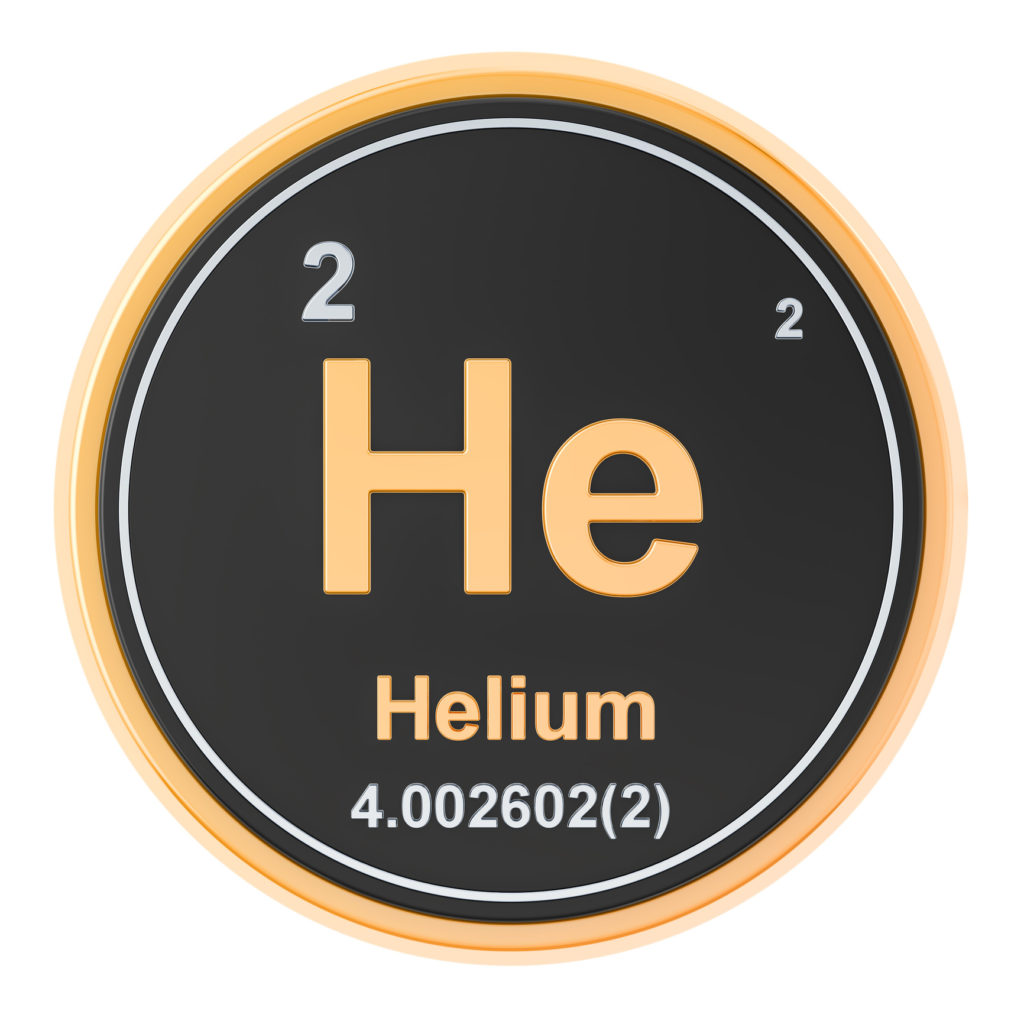Helium is a marvellous gas. This chemical element is colourless, the second lightest in the known Universe, odourless, tasteless and the first in the noble gas group in the periodic table. Named for the Greek Titan of the Sun, Helios, it was discovered in the solar spectrum of the sun by English astronomer Norman Lockyer in 1868 – after it was wrongly assumed to be sodium – and later named by English chemist Edward Frankland.

In 1881, helium was first detected on earth and was isolated in 1895. Since then, humanity has used helium for many different applications including airships, medical applications such as MRI scanners, and, of course, for inflating balloons.
So, where does this fantastic gas come from? How do we get hold of it? Here’s all you need to know about where helium comes from:
Naturally Occurring
Helium is the second most abundant element in the Universe, as it is produced as a product of the fusion reaction inside stars. However, on Earth, it is much rarer, with the Earth’s atmosphere’s concentration by volume being only 5.2 parts per million. This concentration is steady despite continuous production of new helium; this is due to most helium on Earth floating up and escaping into space.
Most of the helium on Earth is a result of radioactive decay and is found in minerals of uranium and thorium and others. During a 1903 drilling operation, helium was found to be in large quantities under the American Great Plains and could be extracted as a by-product of natural gas. This allowed the US to become the world’s leading supplier of helium.
Helium Extraction
For large scale use, helium is extracted through a process called fractional distillation from natural gas, which is drilled out from under the ground. Helium has a lower boiling point than any other element, so low temperatures and high pressures are used to liquefy nearly all the other gases in the mixture, resulting in crude helium gas being purified by exposure to lowering temperatures.
Natural gas will liquefy between -15 and -25 degrees Celsius; the nitrogen can then be removed. Nitrogen liquifies at around -70 degrees Celsius, so then the helium can be removed. Helium then liquifies at -250 degrees Celsius, and the liquid helium is then purified usually resulting in 99.9% pure helium.
The liquid form of helium is also cheaper to transport, making it ideal for shipping large quantities.
In 2008, 78% of the world’s helium came from the US, 10% from Algeria and the remainder mostly from countries like Russia, Poland and Qatar. By 2013, Qatar had increased its extraction to become a producer of 25% of the world’s helium, the second largest after the US.
Diffusion of crude natural gas can also recover and purify helium. It can also be synthesised by bombardment of lithium or boron with high-velocity protons, or by the bombardment of lithium with deuterons, but these processes are not economically viable methods of production.

Helium Facts
Here are some facts about the element helium:
- The speed of sound in helium is nearly three times the speed of sound in air – this causes a corresponding increase in the resonant frequencies of the vocal tract when helium is inhaled, hence the high pitch voice it causes.
- Helium makes up around 45% of the mass of the sun.
- Inhaling too much helium can be dangerous as it displaces oxygen needed for respiration. Additionally, inhaling directly from a cylinder can result in barotrauma, fatally rupturing lung tissue.
- Helium serves no biological function.
- Helium is used in specialised breathing mixtures of gases for very deep scuba diving as a replacement for nitrogen, due to its ability to be easily compressed and it being non-toxic (nitrogen build-up can cause fatal decompression illness).
- Helium has the lowest boiling point and the lowest melting point of all the elements.
We hope you’ve enjoyed this look into the wonderful world of helium. If you’re looking for helium to fill some balloons for your next big event, at Fill n’ Away, we can provide you with a disposable helium tank, canisters or even helium balloon kits.
We have over 20 years of experience supplying wholesale and retail customers, and we are the largest importers of disposable and refillable gas canisters in the UK. Contact us today to find out more and to make enquiries.
